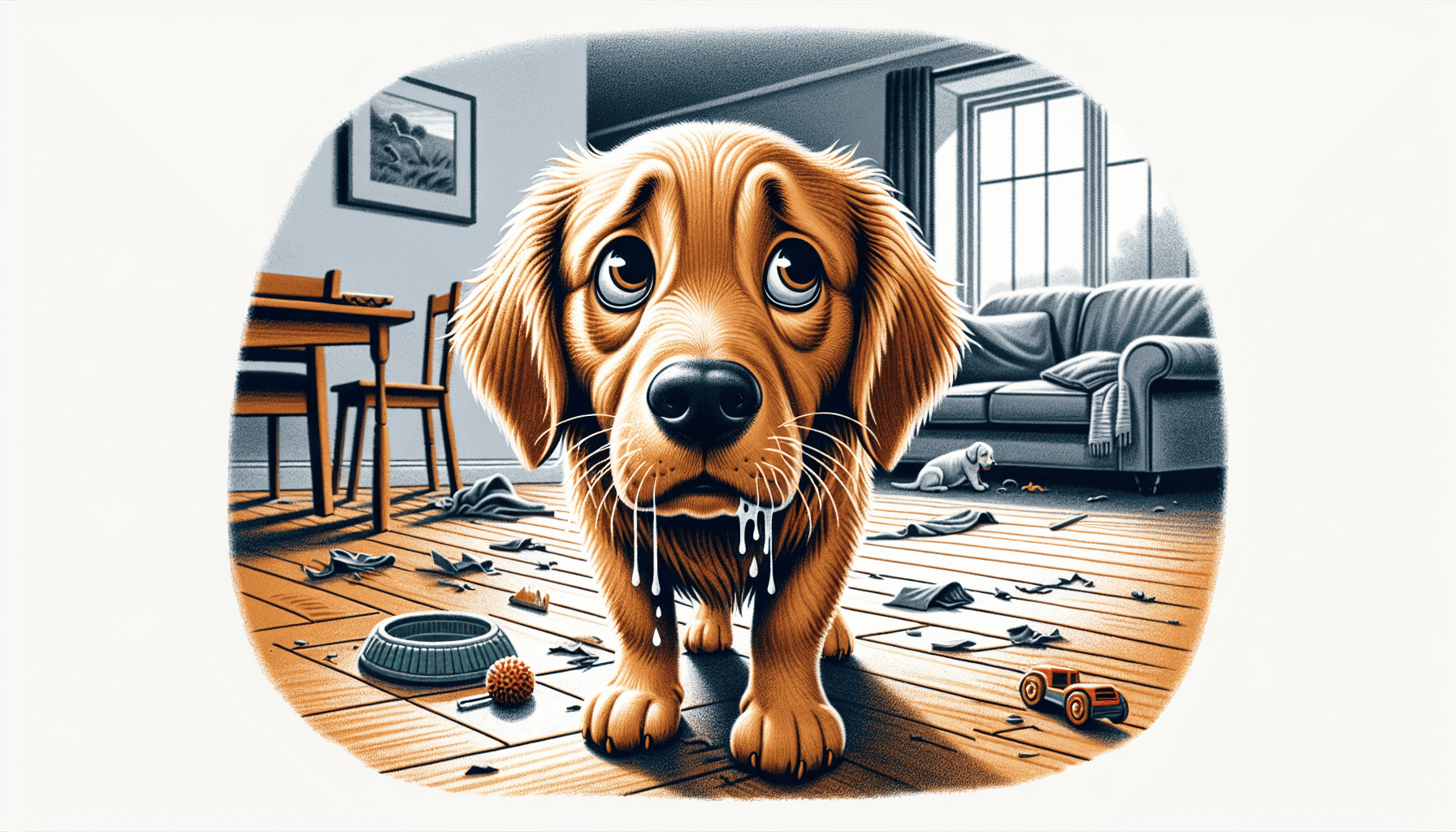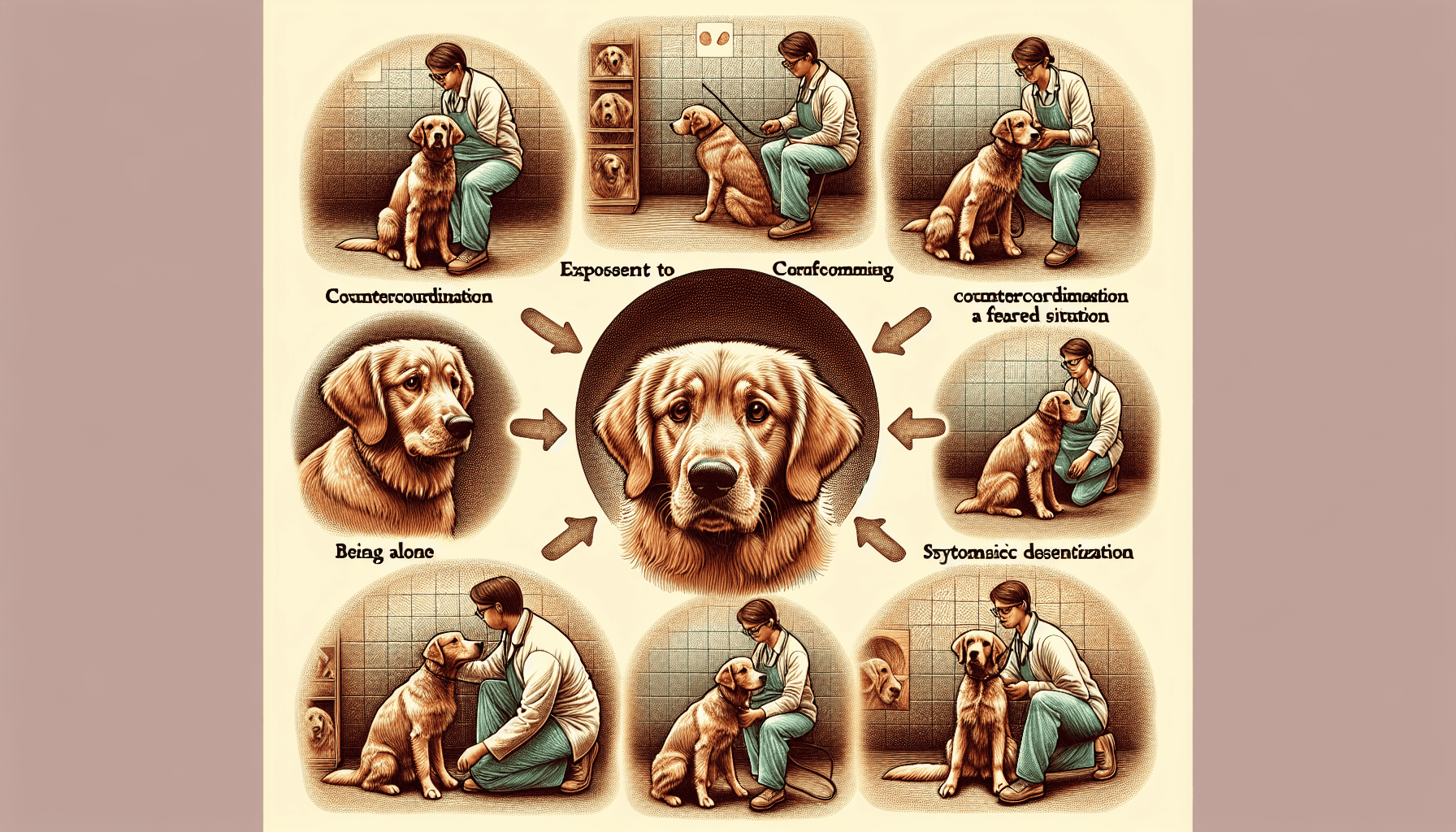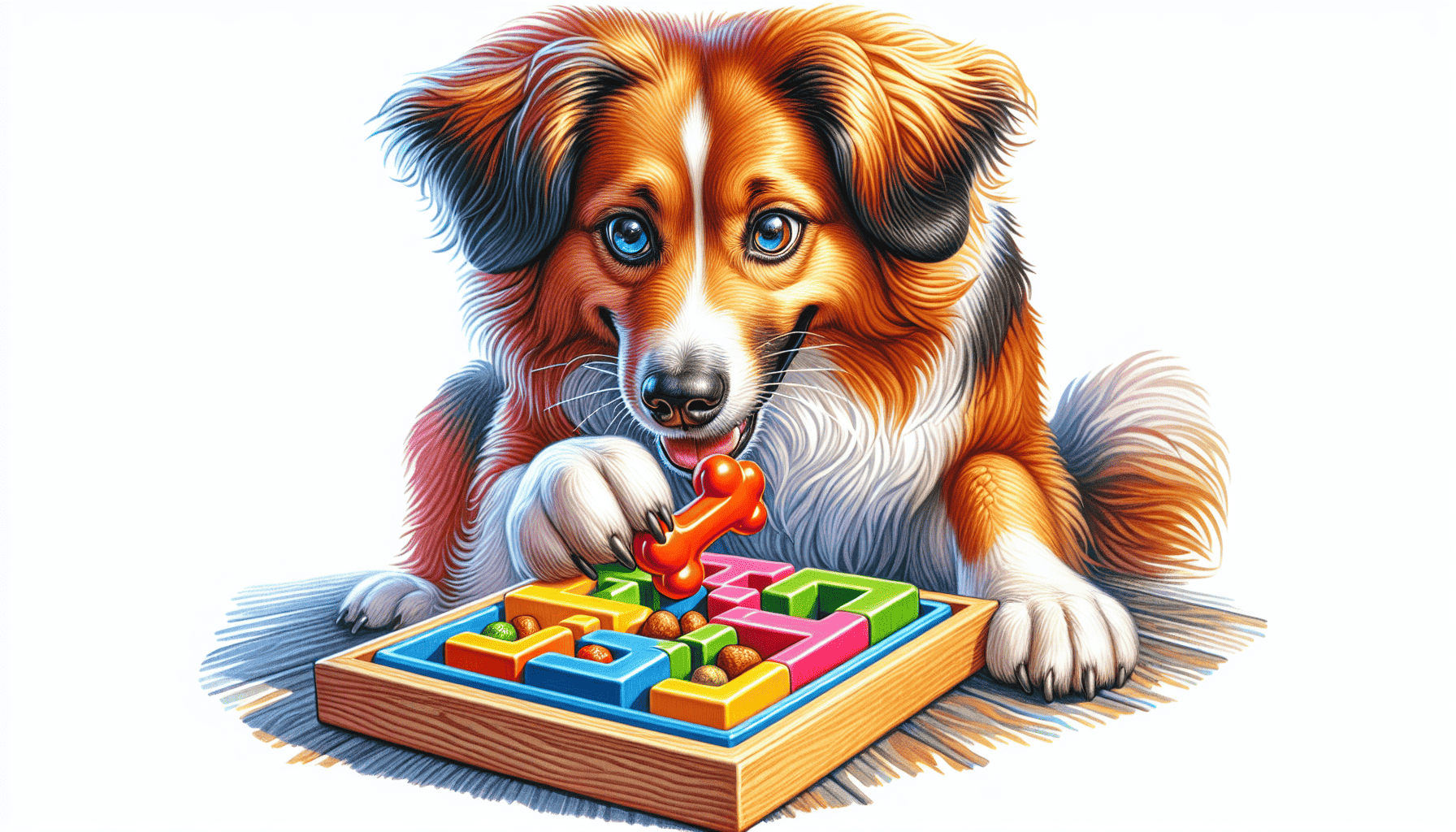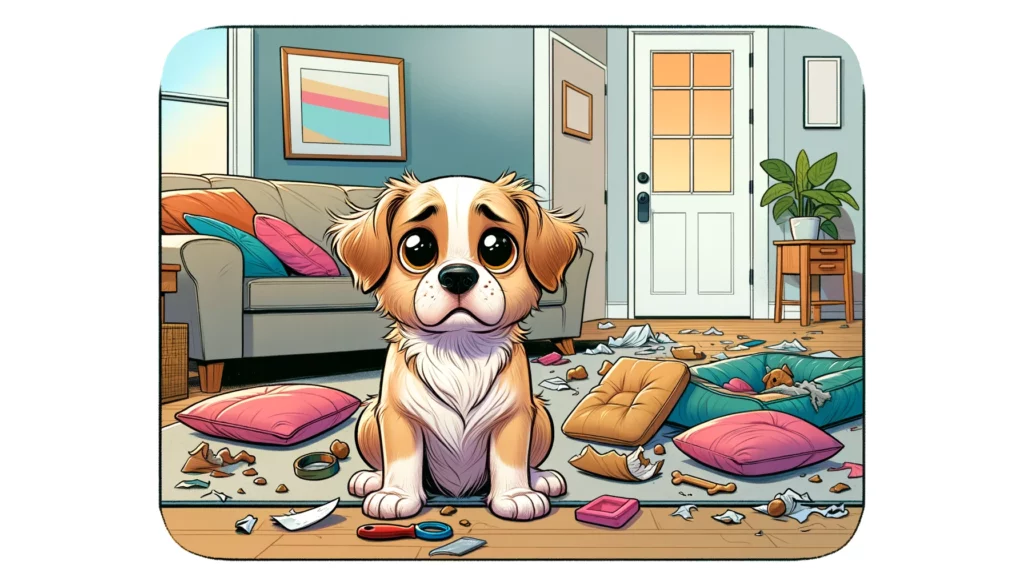Dealing with separation anxiety in dogs can be tough. Learn how to spot the signs and take concrete steps to help your dog feel more secure when alone. This no-nonsense guide dives into effective strategies for managing and treating your dog’s anxiety for a calmer, happier pet.
Key Takeaways
Canine separation anxiety is caused by various triggers, such as changes in family, schedule, or residence, and manifests through physical and behavioral symptoms, including destructive behaviors and physical distress signs.
Prevention and treatment of separation anxiety include socialization, positive reinforcement, independence training, and interrupting pre-departure anxiety cues, alongside professional-developed desensitization and counterconditioning programs.
Professional guidance from certified dog trainers or veterinary behaviorists is critical for creating customized treatment plans that may involve behavior modification, medication, natural remedies, and environmental enrichment to manage symptoms.
Table of Contents
Understanding Canine Separation Anxiety

Dog separation anxiety is a complex condition that arises when dogs become distressed due to separation from their guardians. It can be triggered by various situations such as changes in the family, schedule, or residence, or even the absence of a particular family member. Recent research suggests that this canine separation anxiety, also referred to as dog’s anxiety, might reflect underlying frustrations, emphasizing the importance of understanding its root causes for effective treatment. In some cases, dogs separation anxiety can be managed through behavioral modifications and training techniques.
Many dogs suffering from separation anxiety exhibit four primary forms of distress:
The need to escape
The desire to reach something outside
Reactions to external noises/events
A form of boredom
This emotional and physical turmoil is influenced by several factors, including the dog’s behavior, the dog’s temperament, the dog-owner relationship, and their interaction patterns.
Interestingly, a dog’s history of being left alone can play a significant role in developing separation-related problems. Dogs left alone for prolonged periods or those never left alone at all are more likely to develop separation anxiety. This understanding forms the basis for the prevention and treatment strategies we’ll explore in the following sections.
Identifying Symptoms of Separation Anxiety in Dogs

Recognizing the signs of separation anxiety in dogs is the first step toward addressing the issue. Dogs express their distress through a variety of physical and behavioral symptoms, which we will delve into in the following subsections.
Physical Symptoms
Physical indications of distress can be a prominent sign that a dog is suffering from separation anxiety. Dogs may exhibit signs of fear or discomfort, such as:
trembling when they are left alone
restlessness
excessive salivation
refusal to eat
These symptoms can all indicate anxiety.
Behavioral Symptoms
Behavioral symptoms can be even more telling than physical ones when it comes to identifying separation anxiety in dogs. One common behavioral sign is destructive behavior. Dogs experiencing separation anxiety may resort to digging or chewing in an attempt to cope with their anxiety, with these behaviors often occurring when the dog is left alone or separated from their owner.
Understanding and addressing these destructive behaviors is a key aspect of managing separation anxiety.
Preventing Separation Anxiety: Socialization and Training

While it’s essential to know how to identify and treat separation anxiety, prevention is always better than cure. Here are some ways to prevent separation anxiety in puppies:
Build a puppy’s confidence through socialization and positive reinforcement
Establish a positive association with a puppy’s safe area
Encourage desired behaviors without triggering anxiety through positive reinforcement
Support the development of security and independence
By following these tips, you can help prevent future separation anxiety in your puppy.
Independence training, starting with short separations, is another effective prevention strategy. This approach teaches dogs that being alone is safe and normal. Integrating alone time into the daily routine also helps in making puppies more independent and less prone to anxiety. Consistent cues when leaving can also help dogs recognize and feel more secure about their owner’s departure.
Disrupting pre-departure cues by changing routines prevents dogs from becoming anxious before an owner’s exit. Some strategies to prevent pre-departure anxiety in dogs include:
Changing routines and preventing dogs from observing departure cues
Associating departure cues with positive situations
Using calming techniques such as providing toys or treats before leaving
By implementing these strategies, you can help reduce your dog’s pre-departure anxiety.
Treatment Approaches for Separation Anxiety
When prevention is not enough, separation anxiety treatment becomes necessary. The treatment approach for canine separation anxiety is multifaceted, involving behavior modification techniques, medications and natural remedies, and environmental changes and support.
Behavior Modification Techniques

Behavior modification techniques are essential in treating separation anxiety, aiming to make the dog less dependent and comfortable in the owner’s absence. One such technique is counterconditioning, which changes a dog’s fearful or anxious reaction into a positive, relaxed one by associating being alone with good things like delicious food. For mild cases of separation anxiety, counterconditioning alone may be sufficient. However, moderate to severe cases generally require a combination of desensitization and counterconditioning.
Systematic desensitization involves exposing the dog to gradually increasing durations of owner absence, starting with very short periods and increasing only as the dog remains calm and relaxed. Professionals can assist in desensitization by formulating plans that carefully increase the time a dog spends alone, employing techniques that prevent the dog from experiencing full-blown anxiety.
Retraining to handle departures involves ignoring the dog’s demands for attention and rewarding quiet behavior. This teaches the dog that calmness will attract the owner’s attention. A crucial component in treating separation anxiety is professional assistance, ensuring that dogs aren’t left alone for longer than they can handle, known as absence suspension.
Medications and Natural Remedies
In some cases, anti-anxiety medication may be necessary to treat dogs with severe separation anxiety, especially if they self-harm or damage their surroundings. Fluoxetine and clomipramine are two such drugs officially approved in the United States for treating canine separation anxiety and have shown improvements in separation-related behaviors.
In addition to medication, natural remedies like dog-appeasing pheromone therapy can be employed to manage symptoms. This therapy has been found to reduce anxiety-related behaviors in dogs with separation anxiety, with 83% showing reduced or eliminated problem behaviors. These vet-approved calming dog treats can also help.
Environmental Changes and Support
Creating a comfortable and secure environment is integral to the treatment of separation anxiety. Setting up a designated safe space with comfortable bedding and fresh water can help dogs build positive associations with alone time. Offering interactive puzzle toys that dispense treats can provide mental distraction and reduce the stress of separation.
Leaving music or a television on can also provide comforting sounds that alleviate the stress and anxiety dogs may feel when alone.
Working with Professionals
Given the complexity of separation anxiety, consulting with a certified professional dog trainer or veterinary behaviorist can be beneficial. These professionals can help create a customized treatment plan for dogs with separation anxiety. Professionals suited to assist with canine separation anxiety include certified separation anxiety trainers and veterinary behaviorists with a background in treating such conditions.
Tips for Dog Owners: Managing Separation Anxiety
While professional guidance is important, there are several strategies that dog owners can implement at home to manage separation anxiety. These include exercise and mental stimulation, establishing a consistent routine, and handling departures and arrivals calmly.
Exercise and Mental Stimulation

One of the most effective ways to manage separation anxiety is through increased exercise and mental stimulation. Regular physical activity is essential for reducing separation anxiety in dogs. Mental engagement is also crucial and can be achieved through activities such as long walks, puzzle treats, and enrichment games.
These activities provide both physical and mental stimulation for dogs, helping to tire them out and make them more likely to relax during times when they are left alone.
Establishing Routine
Establishing a predictable routine can help dogs develop comfort with their owner’s absence. This routine should include:
Daily exercise
Feeding
Training
Play
Elimination
Object play
Naps when you would normally depart
A consistent routine can help mitigate the effects of separation anxiety and make your dog feel more secure when you’re not around or when you have a dog sitter.
Handling Departures and Arrivals
How you handle your departures and arrivals can significantly impact a dog’s anxiety levels. Reducing the emotional intensity of arrivals can alleviate the dog’s stress and help in managing separation anxiety. Dog owners should be calm and not make their arrival an overly exciting event.
Attention should only be offered to the dog once it has calmed down, ensuring a low-key interaction during homecomings.
Summary
To sum up, canine separation anxiety is a common but complex issue that many dog owners face. Understanding its root causes, identifying symptoms, and implementing prevention and treatment strategies can help manage this condition. Whether it’s through behavior modification techniques, medication, environmental changes, or simply providing more exercise and mental stimulation, every step taken can contribute to a happier, less anxious life for your beloved pet.
Frequently Asked Questions
How do you stop separation anxiety in dogs?
To prevent separation anxiety in dogs, provide them with stimulating activities and toys, such as stuffed ‘kong’ toys or treat balls, to keep them entertained while you’re away. A certified professional dog trainer can also assist with positive reinforcement techniques.
Can separation anxiety in dogs be cured?
Yes, separation anxiety in dogs can be cured through a program of behavior modification and, if necessary, medication. Early intervention is key to reducing or eliminating the problem.
What medication can you give a dog for separation anxiety?
You can give your dog fluoxetine, which is FDA-approved for the treatment of separation anxiety in dogs. It can also be prescribed for other types of anxiety and behavior issues.
What causes separation anxiety in dogs?
Separation anxiety in dogs can be triggered by various situations such as changes in the family, schedule, or residence. This can lead to feelings of distress and anxiety for the dog, causing them to exhibit behaviors such as destructive chewing or excessive barking.
What kind of professional help can I seek for my dog’s separation anxiety?
Seek certified professionals such as dog trainers or veterinary behaviorists who can create a customized treatment plan for your dog’s separation anxiety. Professional guidance is essential in effectively addressing this issue.






